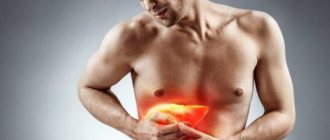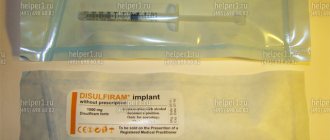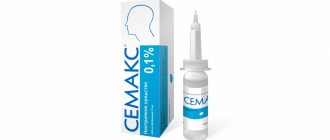The liver is the second organ after the brain that does not have nerve endings, and therefore does not generate pain in our body. Why then do we say: “My liver hurts or aches.” Similar sensations that occur in the right hypochondrium occur when the liver becomes inflamed or exposed to various kinds of diseases. Increasing in size or deforming, the capsule stretches, and the liver begins to put pressure on adjacent organs and tissues, causing discomfort. Even the slightest discomfort in this area, which lasts more than one or two days, is a reason to pay close attention to the gland and get help.
In this article we talk about Essentiale, a drug for the treatment and prevention of liver diseases. When, how and why to use it, when the effect occurs.
Liver diseases
The liver is a very powerful and the only filter of our body. Nature made sure that this filter is capable of self-healing, because it carries vital functions:
- Protective, or detoxifying, function of the liver. Some substances, such as barbiturates or alcohol, are completely destroyed in the liver. However, taking large doses of sleeping pills leads to damage to liver cells.
- Removing harmful substances from the body.
- Urea is formed in liver cells from ammonia. Urea from the liver travels through the bloodstream to the kidneys, from where it is excreted in the urine.
- Formation and production of bile. Bile promotes the absorption of fats in the small intestine and the neutralization of hydrochloric acid.
- The liver plays an important role in maintaining a constant blood composition.
- Accumulation of nutrients, vitamins and iron.
The liver clears the blood of bilirubin, the remnants of red blood cells that have outlived their 110-day life. The gland is most active from 1 to 3 am. The fact that she is not all right is indicated by such symptoms as: dry throat, bitterness in the mouth, pain in the right hypochondrium, inability to bend over, heaviness, dull or aching sensations, increased bloating, constant nausea, vomiting, lightening of the stool, change in its consistency, darkening of urine, change in skin color (yellowishness of the skin and sclera), the appearance of “red spider veins,” weight loss, enlargement of internal organs, determined by palpation.
Causes of liver disease
Viruses and bacteria. Viral diseases include hepatitis types A, B, C, D and others. They provoke acute and chronic inflammatory processes. In 57% of cases, hepatitis develops into cirrhosis of the liver. The causes of bacterial infections are usually echinococcus, alveococcus and roundworms, as well as leptospira - the causative agents of leptospirosis. The diseases also occur in acute or chronic form and in the form of cystic transformation of the liver.
Violation of fat metabolism. In this case, the content of lipids (fats) in the liver cells increases, which is why the iron may increase in size and lose its ability to function normally. This leads to the development of diseases such as fatty hepatosis (steatosis of the liver) and subsequently to cirrhosis. Disorders of fat metabolism in the liver in Russia affect about 27% of the population.
Alcohol abuse. Systematic excessive consumption of alcoholic beverages has a detrimental effect on liver cells, which over time can cause cirrhosis. Researchers have derived a relatively safe daily dose of ethanol-containing drinks: less than 30 ml of vodka (cognac, whiskey), 150 ml of wine or 250 ml of beer per day for women and 60 ml of vodka (cognac, whiskey), 300 ml of wine or 500 ml of beer per day - for men.
Toxic damage from drugs. Occurs as a result of uncontrolled use of medications, which leads to changes in liver tissue and disruption of its normal functioning. There are acute and chronic forms of toxic lesions. Chronic diseases arise due to the constant ingestion of doses of toxic substances into the body. They can be asymptomatic for years.
When metabolic processes in the liver and gallbladder are disrupted, stones can form. These gallstones do not cause any discomfort for the time being. But one day the disease may manifest itself in the form of “biliary colic,” when severe pain occurs due to a stone getting stuck in the bile duct. This condition can be life-threatening.
Composition of Essentiale
Essentiale is a complex of phospholipids from soybeans and choline (so-called essential phospholipids). Phospholipids are structural components of cell membranes. Contained in nervous tissue, they are involved in the delivery of fats, fatty acids and cholesterol. Any liver disease is, first of all, damage to the membranes of liver cells and their organelles, which leads to disturbances in the activity of enzymes and receptors associated with them, deterioration in the work and activity of liver cells and a decrease in the ability to regenerate.
| Solution | 1 ampoule, 5 ml |
| Active ingredient: phosphatidylcholine from soybean dried substance containing 93% (3-sn-phosphatidyl) choline: synonyms - “essential phospholipids”, “EPL®” - 250 mg. | |
| Excipients: benzyl alcohol - 45 mg, deoxycholic acid -115 mg, sodium chloride - 12 mg, sodium hydroxide - 11.5 mg, riboflavin - 0.5 mg, ? – tocopherol – 0.75 mg, ethanol – 16.304 mg, water for injection – 4543, 680 mg. |
Release form and dosage
The drug Essentiale is available in gelatin capsules and as an injection solution. The number of capsules per package can be 30, 90 and 180 pieces, ampoules per package - 5.
Essentiale forte N capsules 300 mg 30 pcs. in St. Petersburg
Essential phospholipids are the main elements of the structure of the cell membrane and cellular organelles. In liver diseases, there is always damage to the membranes of liver cells and their organelles, which leads to disruptions in the activity of associated enzymes and receptor systems, deterioration in the functional activity of liver cells and a decrease in the ability to regenerate.
The phospholipids included in the preparation Essentiale® forte N correspond in their chemical structure to endogenous phospholipids, but are superior to endogenous phospholipids in activity due to their higher content of polyunsaturated (essential) fatty acids. The integration of these high-energy molecules into damaged areas of hepatocyte cell membranes restores the integrity of liver cells and promotes their regeneration. The cis-double bonds of their polyunsaturated fatty acids prevent the parallel arrangement of hydrocarbon chains in the phospholipids of cell membranes; the phospholipid structure of the cell membranes of hepatocytes is “loosened,” which increases their fluidity and elasticity and improves metabolism. The resulting functional blocks increase the activity of enzymes fixed on the membranes and contribute to the normal, physiological pathway of the most important metabolic processes.
Phospholipids, which are part of the drug Essentiale® forte N, regulate the metabolism of lipoproteins, transferring neutral fats and cholesterol to sites of oxidation, this occurs mainly by increasing the ability of HDL to bind to cholesterol.
Thus, the drug has a normalizing effect on the metabolism of lipids and proteins, the detoxification function of the liver, on the restoration and preservation of the cellular structure of the liver and phospholipid-dependent enzyme systems, which ultimately prevents the formation of connective tissue in the liver and promotes the natural restoration of liver cells.
With the excretion of phospholipids into the bile, the lithogenic index decreases and the bile is stabilized.
In patients with non-alcoholic fatty liver disease, the use of essential phospholipids in controlled randomized clinical trials led to a significant reduction in the degree of steatosis.
In clinical and observational studies, with the use of Essentiale Forte N in patients with chronic liver diseases, relief of general condition and symptoms was observed, such as increased fatigue/weakness, decreased appetite, abdominal pain or discomfort, a feeling of rapid satiety, a feeling of fullness or heaviness after food, bloating, nausea. Significant improvement in symptoms was observed in studies after only 4 weeks (30 days) of therapy.
The use of essential phospholipids in controlled and observational studies in patients with psoriasis led to regression of psoriatic rashes and a decrease in the psoriasis prevalence and severity index (PASI). The addition of essential phospholipids to PUVA therapy allowed for faster remission while reducing the total dose of ultraviolet radiation.
Indications for Essentiale
- chronic hepatitis; cirrhosis of the liver; fatty liver of various etiologies; toxic liver damage; alcoholic hepatitis; liver dysfunction in other somatic diseases;
- toxicosis of pregnancy;
- prevention of recurrence of gallstone formation;
- psoriasis (as an adjuvant therapy);
- radiation syndrome.
Treatment regimens
Take capsules orally with plenty of water.
The drug is suitable for use in adolescents over 12 years of age and adults. The recommended dosage is 2 capsules. 3 times a day with meals.
There are no restrictions on the duration of treatment from the manufacturer, but depending on the severity of the disease, it is important to consult with a specialist. Maintenance therapy on a regular basis is possible only if there are clear signs of improvement. In other cases, the advisability of taking the medicine or replacing it is determined by a specialist.
According to consumer reviews, a positive effect occurs in a short time (for mild ailments); for severe or complex forms of the disease, in order to achieve a lasting effect, you need to drink a minimum course of a month. Perhaps as part of complex therapy.
Contraindications
One of the main contraindications is a tendency to allergic reactions. The fact is that Essentiale capsules contain soybean oil in the shell, which can provoke severe allergic reactions in people prone to such. Otherwise, the drug is well tolerated, with the exception of individual reactions of the body to the components of the composition.
Who needs Essentiale® Forte N
Unfortunately, the liver usually does not give any specific signals about problems, therefore, to identify disorders, diagnostics are necessary (for example, ultrasound of the liver, biochemical blood test)10. Essential phospholipids are used for non-alcoholic fatty liver disease (risk factors for the development of which are usually overeating and lack of physical activity), alcoholic liver disease, as well as other liver pathologies10, 12. The active ingredient Essentiale® Forte N - essential phospholipids - as times reduces the severity of fatty infiltration3, 6, 7.
Indications for use of Essentiale® Forte N:
- Fatty liver disease
- Chronic viral hepatitis
- Alcoholic fatty liver disease
Contraindications to the use of Essentiale® Forte N:
- hypersensitivity to phosphatidylcholine, the main essential phospholipid in the drug;
- hypersensitivity to soy, soybeans (the drug contains soybean oil, so it is important to make sure there is no allergic reaction) and other components of the drug4;
- age up to 12 years (and weight
Special Recommendations
Essentiale and alcohol
Since alcohol has a well-known toxic effect on the body and liver cells, the use of Essentiale and alcohol intake become incompatible concepts. In addition, one should not assume that the drug is capable of providing a supportive and protective effect on the liver while taking alcohol-containing products. During treatment with Essentiale, it is recommended to refrain from drinking alcohol.
Essentiale and diet
Compliance with a strictly mandatory diet during the course of Essentiale is not a strict obligation, but only a recommendation. Any disease of the digestive organs and glands requires dietary nutrition. Because diet is the basis for a positive outcome in such diseases. During the acute period of the disease, the liver is especially vulnerable and it needs support “on all fronts.” So, you should maximally exclude from the diet foods that load the liver and disrupt the motility of the biliary tract: fatty and fried foods, exclude smoked and pickled foods, any dough and fresh baked goods, baked goods (for example, dried bread, crackers and biscuits in reasonable quantities), strong, rich soups with mushroom, fish or meat broths, offal, foods cooked on the grill or fire, canned food, legumes, spices.
Essentiale during pregnancy
The drug Essentiale is recommended during pregnancy as a means of relieving toxicosis and nausea syndromes. However, during this period it should be taken strictly on the recommendation of a specialist, excluding potential risks for both the fetus and the expectant mother. But during breastfeeding, this drug is contraindicated, since research in this area has not been conducted.


